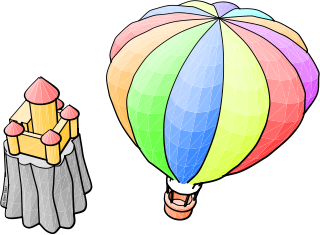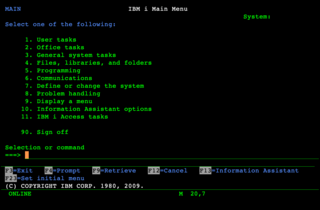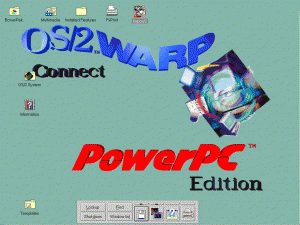Related Research Articles
PL/I is a procedural, imperative computer programming language developed and published by IBM. It is designed for scientific, engineering, business and system programming. It has been used by academic, commercial and industrial organizations since it was introduced in the 1960s, and is still used.

Smalltalk is a purely object oriented programming language (OOP), created in the 1970s for educational use, specifically for constructionist learning, at Xerox PARC by Learning Research Group (LRG) scientists, including Alan Kay, Dan Ingalls, Adele Goldberg, Ted Kaehler, Diana Merry, and Scott Wallace.
OpenStep is a defunct object-oriented application programming interface (API) specification for a legacy object-oriented operating system, with the basic goal of offering a NeXTSTEP-like environment on non-NeXTSTEP operating systems. OpenStep was principally developed by NeXT with Sun Microsystems, to allow advanced application development on Sun's operating systems, specifically Solaris. NeXT produced a version of OpenStep for its own Mach-based Unix, stylized as OPENSTEP, as well as a version for Windows NT. The software libraries that shipped with OPENSTEP are a superset of the original OpenStep specification, including many features from the original NeXTSTEP.

Taligent Inc. was an American software company. Based on the Pink object-oriented operating system conceived by Apple in 1988, Taligent Inc. was incorporated as an Apple/IBM partnership in 1992, and was dissolved into IBM in 1998.

The AIM alliance, also known as the PowerPC alliance, was formed on October 2, 1991, between Apple, IBM, and Motorola. Its goal was to create an industry-wide open-standard computing platform based on the POWER instruction set architecture. It was intended to solve legacy problems, future-proof the industry, and compete with Microsoft's monopoly and the Wintel duopoly. The alliance yielded the launch of Taligent, Kaleida Labs, the PowerPC CPU family, the Common Hardware Reference Platform (CHRP) hardware platform standard, and Apple's Power Macintosh computer line.
Originally, the word computing was synonymous with counting and calculating, and the science and technology of mathematical calculations. Today, "computing" means using computers and other computing machines. It includes their operation and usage, the electrical processes carried out within the computing hardware itself, and the theoretical concepts governing them.

OpenDoc is a defunct multi-platform software componentry framework standard created by Apple in the 1990s for compound documents, intended as an alternative to Microsoft's proprietary Object Linking and Embedding (OLE). It is one of Apple's earliest experiments with open standards and collaborative development methods with other companies. OpenDoc development was transferred to the non-profit Component Integration Laboratories, Inc., owned by a growing team of major corporate backers and effectively starting an industry consortium. In 1992, the AIM alliance launched between Apple, IBM, and Motorola—with OpenDoc as a foundation. With the return of Steve Jobs to Apple, OpenDoc was discontinued in March 1997.
An object-oriented operating system is an operating system that is designed, structured, and operated using object-oriented programming principles.

IBM i is an operating system developed by IBM for IBM Power Systems. It was originally released in 1988 as OS/400, as the sole operating system of the IBM AS/400 line of systems. It was renamed to i5/OS in 2004, before being renamed a second time to IBM i in 2008. It is an evolution of the System/38 CPF operating system, with compatibility layers for System/36 SSP and AIX applications. It inherits a number of distinctive features from the System/38 platform, including the Machine Interface, the implementation of object-based addressing on top of a single-level store, and the tight integration of a relational database into the operating system.
Delphi is a general-purpose programming language and a software product that uses the Delphi dialect of the Object Pascal programming language and provides an integrated development environment (IDE) for rapid application development of desktop, mobile, web, and console software, currently developed and maintained by Embarcadero Technologies.

OpenMP is an application programming interface (API) that supports multi-platform shared-memory multiprocessing programming in C, C++, and Fortran, on many platforms, instruction-set architectures and operating systems, including Solaris, AIX, FreeBSD, HP-UX, Linux, macOS, and Windows. It consists of a set of compiler directives, library routines, and environment variables that influence run-time behavior.

The Standard Widget Toolkit (SWT) is a graphical widget toolkit for use with the Java platform. It was originally developed by Stephen Northover at IBM and is now maintained by the Eclipse Foundation in tandem with the Eclipse IDE. It is an alternative to the Abstract Window Toolkit (AWT) and Swing Java graphical user interface (GUI) toolkits provided by Sun Microsystems as part of the Java Platform, Standard Edition (J2SE).

In computing, the System Object Model (SOM) is an object-oriented shared library system developed by IBM. DSOM, a distributed version based on CORBA, allowed objects on different computers to communicate.

Workplace OS is IBM's ultimate operating system prototype of the 1990s. It is the product of an exploratory research program in 1991 which yielded a design called the Grand Unifying Theory of Systems (GUTS), proposing to unify the world's systems as generalized personalities cohabitating concurrently upon a universally sophisticated platform of object-oriented frameworks upon one microkernel. Developed in collaboration with Taligent and its Pink operating system imported from Apple via the AIM alliance, the ambitious Workplace OS was intended to improve software portability and maintenance costs by aggressively recruiting all operating system vendors to convert their products into Workplace OS personalities. In 1995, IBM reported that "Nearly 20 corporations, universities, and research institutes worldwide have licensed the microkernel, laying the foundation for a completely open microkernel standard." At the core of IBM's new unified strategic direction for the entire company, the project was intended also as a bellwether toward PowerPC hardware platforms, to compete with the Wintel duopoly.

A class browser is a feature of an integrated development environment (IDE) that allows the programmer to browse, navigate, or visualize the structure of object-oriented programming code.
Embedded SQL is a method of combining the computing power of a programming language and the database manipulation capabilities of SQL. Embedded SQL statements are SQL statements written inline with the program source code, of the host language. The embedded SQL statements are parsed by an embedded SQL preprocessor and replaced by host-language calls to a code library. The output from the preprocessor is then compiled by the host compiler. This allows programmers to embed SQL statements in programs written in any number of languages such as C/C++, COBOL and Fortran. This differs from SQL-derived programming languages that don't go through discrete preprocessors, such as PL/SQL and T-SQL.
GemStone/S is computer software, an application framework that was first available for the programming language Smalltalk as an object database. It is proprietary commercial software.

Model–view–presenter (MVP) is a derivation of the model–view–controller (MVC) architectural pattern, and is used mostly for building user interfaces.
XL C/C++ is the name of IBM's proprietary optimizing C/C++ compilers for IBM-supported environments.
References
Citations
- 1 2 "VisualAge for OS/2, Version 1.0" (Press release). IBM. October 12, 1993. ENUSZP93-0585. Retrieved March 12, 2018.
- ↑ Software withdrawal: Selected IBM C, VisualAge C++, and XL Fortran programs (PDF), IBM, December 13, 2005, ENUS905-270, retrieved March 12, 2018
- ↑ "VisualAge C++". IBM. Archived from the original on September 15, 2011. Retrieved January 26, 2011.
- ↑ "Will It Go Round in Circles? (IBM, Smalltalk, and VisualAge)". Archived from the original on October 19, 2008. Retrieved November 1, 2008.
- ↑ Gagnon, Gabrielle (February 4, 1997). "VisualAge for C++ 4.0: Previewing Taligent". PC Mag. Retrieved February 12, 2019.
- ↑ "Will It Go Round in Circles?". denhaven2. Archived from the original on October 19, 2008. Retrieved October 19, 2016.
- ↑ "VisualAge Smalltalk Transition FAQ". Instantiations. Retrieved March 12, 2018.
- ↑ "Smalltalk Products Home". Instantiations. Retrieved May 19, 2009.
- ↑ "Instantiations History". Instantiations. Retrieved May 19, 2009.
- ↑ "VisualAge C++". EDM/2. Retrieved March 12, 2018.
- ↑ "IBM VisualAge Generator for OS/2 and Windows NT Version 3.1 Boosts Application Development Productivity" (Press release). IBM. June 16, 1998. ENUS298-190. Archived from the original on October 23, 2017. Retrieved March 12, 2018.
{{cite press release}}: CS1 maint: bot: original URL status unknown (link) - ↑ "VisualAge for OS/2, Version 1.0" (Press release). IBM. March 29, 1994. ENUSZP94-0232. Retrieved March 12, 2018.
Bibliography
VisualAge - Smalltalk
- IBM Corp., IBM, (1994). “IBM VisualAge (printed paper bound retail hardboard box)”. . IBM Corp. Part Number 14H0969 and lid Part Number 30H2314 Product Number 17H7495 Bar code: 087944096085
- IBM Corp., IBM, (Spring 1995). “Smalltalk resource catalogue”. . IBM Corp. (96 pages) Product Number G325-0813-01 Part Number 30H2238
- IBM Corp., IBM, (October 1994). “Development guide”. 1st edition. (250 pages) Product Number SC34-4495-00 Part Number 14H0295
- IBM Corp., IBM, (October 1994). “Programmer’s reference”. 2nd edition. IBM Corp. (458 pages) Product Number SC34-4493-01 Part Number 14H0297
- IBM Corp., IBM, (October 1994). “IBM Smalltalk”. 2nd edition. IBM Corp. (172 pages) Product Number SC34-4491-01 Part Number 14H0296
- IBM Corp., IBM, (October 1994). “Installation guide booklet”. 2nd edition. IBM Corp. (48 pages) Part Number 14H1071
- IBM Corp., IBM, (October 1994). “Programmer’s guide to building”. 2nd edition. IBM Corp. (149 pages) Product Number SC34-4496-00 Part Number 14H1070
- IBM Corp., IBM, (October 1994). “User’s Guide and Reference”. 2nd edition. IBM Corp. (642 pages) Product Number SC34-4490-01 Part Number 14H0922;
IBM VisualAge for COBOL Standard is “Year 2000 ready” and Requires: Warp Version 4.0 plus FixPak 1 or Windows NT 4.0 plus Service Pack 3
- IBM Corp., IBM, (1997). “IBM VisualAge for COBOL Standard (printed retail card box)”. Version 2.1. IBM Corp. Product Number P4301938 Bar Code: 1264301938000104 Part Number 4301978
- IBM Corp., IBM, (1997). “IBM VisualAge for COBOL Getting Started on Windows Manual”. IBM Corp. (130 pages) Product number GC26-8944-01 Bar Code: GC26-8944-01 Part No. 4301981
- IBM Corp., IBM, (September 1997). “IBM VisualAge for COBOL Getting Started on OS/2 Manual”. IBM Corp. 2nd Edition. (156 pages) Document Number GC26-9051-01
- IBM Corp., IBM, (April 1997). “Resource Catalogue for IBM COBOL Family V 1”. Release 4. (44 pages) Product Number GC26-8488-03 Part Number 4226010